
Read Juan Gonzalez’ article “Where Have All The Fighters Gone? An Analysis of New York City Mayoral Race of 2005”
Where Have All The Fighters Gone?
An Analysis of New York City Mayoral Race of 2005
By Juan Gonzalez
On November 8, the voters of New York City will elect a new mayor. Incumbent Republican Michael Bloomberg is being challenged by Democrat Fernando Ferrer. Also on the ballot are half a dozen minor party candidates, including Thomas Ognibene of the Conservative Party and Tony Gronowicz of the Green Party. By the time the race is over, Bloomberg, a billionaire media mogul, will have spent more than $100 million from his personal fortune, shattering all spending records for any elected office in the United States other than president. Ferrer, a veteran politician from one of the poorest neighborhoods in the country, is running a shoestring campaign in which he has been outspent by Bloomberg by an astounding 17-to-1.
Bloomberg’s television and radio commercials have blanketed the airwaves for months in more than a half-dozen languages, so it should come as no surprise that public opinion polls show the mayor with a commanding lead.
A Ferrer victory would make him the first Latino mayor in New York history, and coming on the heels of Antonio Villaraigosa’s successful run for mayor of Los Angeles earlier this year it would signal that the nation’s exploding Latino population has begun to redefine and realign political power in urban America.
Throughout this long campaign, however, many progressive and liberal activists in the city, even in the African American and Latino communities, have sat on the sidelines or shown little enthusiasm for the Democratic challenger. Those progressives–in an echo of Bloomberg’s own campaign–claim that Ferrer is a lackluster candidate and political hack. They view the current mayor as a political moderate who is a Republican in name only, who is more conciliatory to the city’s Black, Brown and poor communities than his predecessor Rudy Giuliani, and thus they regard his re-election as an acceptable and largely inevitable outcome. Most of the city’s organized labor leaders have backed the Republican mayor, except for a handful of the most militant unions, such as the transit workers, the huge Local 1199, and the Professional Staff Congress, all of which are doggedly fighting to elect Ferrer.
Quite simply, to a large number of progressives there is no fundamental difference between Bloomberg and Ferrer.
That viewpoint, in my opinion, is profoundly mistaken.
I believe the New York mayoral race of 2005–a contest to control a government that employs some 300,000 workers and dispenses an annual budget of more than $50 billion–is a pivotal battle for the city’s workers and its middle class, for the nation’s 40 million Latinos and for the future of urban America.
Many well-meaning progressives, unfortunately, have yet to grasp the stakes in this race, and that failure is rooted in two persistent weaknesses of the progressive movement.
1. Class and racial divisions among progressives themselves
2. A lack of any rigorous analysis of the economic and political forces that are rapidly transforming everyday life in our nation’s cities.
I do not say these things lightly.
As a journalist who has chronicled urban politics in this country for decades, as a Puerto Rican with long experience in movements for racial and ethnic equality, and as a labor activist who has consistently fought to revive the American trade union movement, I learned long ago that outward appearances are often deceiving, that the surface manifestations of any political process often mask powerful currents swirling below.
Yet I have been amazed at the virtual absence of dispassionate and comprehensive analysis about this election; an analysis grounded in facts, one that places the conflict in the context of broader historical patterns, one that consistently asks: what is in the best interest of working people and the marginalized or oppressed groups of New York City? Once you begin to look at the mayoral race from that deeper perspective, you begin to realize that there have been few times in recent memory when an urban electorate faced such a clear class choice–in the personalities of the candidates, their stands on the issues, and the forces they represent.
You need only look at the traditional ruling circles of the city–the banking, corporate, real estate and media barons–to see how much they understand what’s at stake. Rarely have they been so unified in their determination to defeat a candidate who comes from the “Other New York,” who speaks openly about economic inequality and claims to represent the working class and racial minorities.
As if to underscore that unanimity, there has bee a constant barrage of reports from the corporate media for the past several months that portrayed Ferrer as a flip-flopper, a liar, a bungler, incompetent, uninspiring, as racially divisive, even as a threat to bring back the drugs, crime and exploding welfare rolls that rabid conservatives most commonly associate with the era of the city’s only black mayor, David Dinkins.
Meanwhile, radical and progressive activists who routinely criticize the corporate mass media for distorted and biased reporting on national and international events issues — such as the Iraq War, civil liberties abuses, federal response to Hurricane Katrina, and global warming — have failed for the most part to discern the media distortion that has existed for month on the New York mayoral race.
Have these activists been devoting so much attention to war atrocities in Baghdad that they have lost sight of the daily problems in their own Brooklyn neighborhoods? Are they more drawn to combating devastation in the Brazilian rain forest than to addressing toxic pollution in the Bronx or Brownsville? Have they quietly reconciled themselves to being political gadflies in perpetual dissent over the big national and international questions, while they avoid the issue of how progressives build mass movements at the local level for lasting social change on those everyday matters that deeply affect the American people right here — housing, jobs, public education, public safety, transportation and taxes?
Persistent class and racial differences within the progressive movement often affect, in ways both conscious and unconscious, the way we react to particular political events. That is why my experience of more than 25 years of covering big city politics has convinced me that Michael Bloomberg, more than any New York mayor in memory, is systematically consolidating a velvet-glove takeover of city government on behalf of Wall Street’s financiers and the city’s real estate barons. I have repeatedly chronicled many of the most flagrant examples of that takeover in my column in the Daily News.
The era of Rudy Giuliani’s mayoralty from 1994 to 2002, in contrast, was the period of iron-fisted government. Giuliani so polarized the city that African Americans, Latinos, and Asians, who now comprise more than two-thirds of its 8 million people, started to rebel and a broad popular opposition began to emerge around civil rights. That rebellion climaxed after the scandalous shooting of unarmed African immigrant Amadou Diallo, when more than a thousand of the city’s top political and community leaders were arrested in civil disobedience protests over several weeks in front of police headquarters. The subsequent public outrage against Giuliani’s authoritarian policies led to a Justice Department investigation and eventually to a consent decree against the Police Department that banned racial profiling. Only the enormous tragedy of the 9/11 attack in the waning days of Giuliani’s second term managed to resurrect the former mayor’s bankrupt reputation.
In the weeks after that attack, with Giuliani unable to seek re-election because of term limits, Bloomberg, a novice to government, emerged and surprised the experts when he spent an unprecedented $73 million in a campaign that narrowly defeated Public Advocate Mark Green, a veteran liberal Democrat. At first, because he exuded none of the meanness and arrogance of a Giuliani, many found Bloomberg refreshing, a possible throwback to the liberal Republicans that New York was famous for producing after World War II.
But since assuming office he has accelerated a trend by which the ruling circles of New York’s white minority population have sought to permanently transform and privatize the democratic apparatus of city government. If that transformation is successful it will almost surely cripple the ability of the city’s African American and Hispanic majority–and of candidates who defend the working and middle classes–to exercise any meaningful control over municipal government for decades to come.
Even if they win election in future years, progressive candidates will discover that the city’s control over its own revenues has been so emasculated that they will be reduced to functioning as neo-colonial puppets, with little ability to improve the welfare of the majority of city residents.
A report last week by the non-profit Economic Policy Institute, for example, revealed that the city granted more than $1 billion in property tax breaks to corporations and developers during Bloomberg’s first two years in office. That was an astonishing 40% increase over the last two years of Giuliani, who himself was known for giving out generous tax breaks to major corporations.
Many of those tax breaks are guaranteed for 20 or 30 years, and often the discounted Payments in Lieu of Taxes (or PILOTs) that the developers agree to pay are then earmarked to finance new mega-projects, to pay off bonds for new sports facilities or to spur more luxury housing or high rise office buildings, and those revenues are inevitably assigned to new quasi-public agencies that can resist public scrutiny. By siphoning off those tax streams for decades to come, Bloomberg, like Giuliani on a smaller scale before him, is effectively dismantling the tax base that future mayors and city councils will need to pay for basic city services.
There is, however, a larger political purpose behind this strategy that few progressives have fully understood. The ruling circles of our nation have had a big problem for many decades. All the great American centers of finance and commerce, New York, Los Angeles, Chicago, Houston, Dallas, are now overwhelmingly populated by African Americans and immigrants from the former colonial or neo-colonial nations of the Third World, most especially from Latin America. But the financial and real estate elites still trace their origins to the diminishing white minorities of those cities. Given our nation’s persistent history of racial and ethnic segregation, those elites have yet to develop close ties to or intimate knowledge about the new majorities in those cities. At the same time, systemic pressures from the capitalist market keep pushing the CEOs and real estate moguls to consolidate even tighter control over elected officials to assure ever-more lucrative government contracts, tax cuts and cheap land, and thus to further maximize profits.
Thus traditional democratic models, whereby the new non-white majorities in those cities would get to elect the next generation of local leaders, increasingly pose unacceptable risks to those ruling circles. In the past, business leaders simply sought to identify, groom and finance pliant local politicians they could easily manipulate, but the rapid growth of the voting power and sophistication of the new urban populations has prompted the ruling circles to embark on a wholesale reinvention of local government, to structurally remove financial control of the cities and their land away from the developing urban majorities.
In the decades after World War II, the white middle and upper classes responded to the influx of minorities by simply fleeing to the suburbs and even the exurbs. They then simply commuted by car or regional transit systems into the cities each day to administer them and conduct their commerce. But beginning with the oil crises of the late 1970s and 1980s, the limits of that absentee approach became apparent and new government policies emerged aimed at gentrifying the inner cities and bringing back the white middle class.
Today, with the world approaching peak oil production, and the price of petroleum destined to skyrocket for decades to come, there is an even stronger economic imperative to reclaim greater swaths of the cities from the poor and working class, to create metropolises on the European or Latin American model, where the wealthy both inhabit and work in the central core, while the poor are relegated to huge low-income and slum housing in the distant suburban rings.
Thus, it is no surprise that during the past few years I have heard the same refrain from local leaders in scores of working class neighborhoods around the city: the land is being given away at fire sale prices to huge developers. The list of such mega-projects and land rezoning initiatives under Bloomberg is truly breath-taking: the $5 billion plans for a new Jets Stadium, luxury housing and office buildings on Manhattan’s West Side; a huge project for luxury condominiums along the Williamsburg waterfront; a giant new Nets arena and high-rise luxury development in Prospect Heights, Brooklyn; a big-box retail complex in the South Bronx near Yankee Stadium: hundreds of of millions of dollars in tax abatements for Wall Street’s Goldman Sachs to build a new corporate headquarters near Ground Zero. The frenzied construction of luxury housing has been accompanied by the decontrol of more than 200,000 rent stabilized apartments in the past few years that provided affordable housing for the working class; by the conversion of thousands of middle class Mitchell-Lama units to market-rate housing, and by virtually no construction of low-income housing. In every neighborhood, local leaders tell me the same story: City Hall is circumventing established mechanisms of public oversight and community control, making backroom deals with developers and bankers, steamrolling any opposition to its wholesale land giveaways.
Already more than 500,000 New York City households are paying more than 50% of their income for rent. The poor and working class are literally being pushed out, only to be replaced by wealthy new resident who comes from around the United States and even overseas (given the weak U.S. dollar and historically low low interest rates, it has become more attractive than ever for rich Europeans and Asians to invest in condominiums and other property in New York and other U.S. cities).
A similar type of disregard for democratic procedures has been evident in Bloomberg’s policies of preventive arrests by the New York police to thwarting mass protests–whether against the war in Iraq in 2003, at the Republican convention in 2004, or even the monthly bicycle protests of the environmental group Critical Mass.
It has been evident, also, in public education, the area of public policy that Bloomberg claims as his greatest success. One of the mayor’s first acts was to seize direct control of the schools by abolishing both the Board of Education and the 32 separate community school boards. While many of those elected boards, which were created during the community control battles of the 1970s, had become corrupt and ineffectual, they remained the only mechanism by which black and Hispanic parents could make their voices heard on education issues. Today there is virtually no community input into public school policy. The directors of the city’s Department of Education, all appointed by the mayor, merely rubber stamp decisions made in City Hall. Parents and teachers I have interviewed tell me they are shut out of local school management and they claim classroom curriculum has just one overriding goal–improving standardized test scores.
That is not to say all of Bloomberg’s policies have been a disaster. Some reforms he has instituted in education, social services and public health have been positive and were long overdue. But those few reforms pale next to his systematic dismantling of the city’s lost established structures of democratic governance–a process that will make it possible in the future for more authoritarian leaders to rule with virtually no accountability.
The Fernando Ferrer campaign, despite its many faults and weaknesses, has mounted a direct challenge to Bloomberg’s anti-democratic policies. It has opposed the “City for Sale” sign for real estate developers. It has called for an end to the massive housing displacement of the city’s working class and poor communities.
From a class and racial perspective, the policy differences between Ferrer and Bloomberg are indeed stark.
Ferrer, for example, backed a lead paint removal bill passed by City Council to protect poor children from lead poisoning, while Bloomberg vetoed the bill, then after Council overrode his veto he backed a long and unsuccessful court challenge to overturn the law.
Ferrer has opposed the establishment of of big box non-union stores like Wal-Mart and Target in the city unless they agree to basic labor protections and to provide health benefits for their employees, while Bloomberg has welcomed the stores and even offered them tax incentives.
Ferrer has backed a living wage bill in Council, while Bloomberg has opposed it.
Ferrer has urged the return of a stock transfer tax to require Wall Street traders to help finance city public schools, and the reimposition of a commuter tax so that suburbanites who use city services each day pay their fair share of costs, Bloomberg has opposed the stock transfer tax and provided only lukewarm support to the commuter tax. Instead the mayor increased property taxes on all homeowners by 18%, and he ordered a drastic increase in the prices of parking and other nuisance summonses, all of which have disproportionately hurt the working class.
Ferrer has opposed the war in Iraq, called for withdrawal of U.S. troops and opposed military recruitment in schools, while Bloomberg has largely backed the war, or at least refused to criticize President Bush’s handling of it, and has supported military recruitment in the schools.
Despite those stark policy differences, many black and white progressives remain unconvinced about Ferrer. Some point to Ferrer’s statements on the Diallo shooting as a reason. Earlier this year, speaking at a meeting of police sergeants, Ferrer said he did not believe the shooting had been a crime, that the four cops involved had been a product of terrible training and accountability under the Giuliani-controlled Police Department. They should have been fired, he said, but not sent to jail. He said this even though he had been one of the many public officials arrested in front of Police Headquarters in the protests against the shooting. While it is true that Ferrer raised the same issue of accountability back then when he was arrested, many saw his latest Diallo statement as duplicitous and as pandering to conservative supporters of law-and-order. He has since apologized several times for the remark but the corporate media have consistently dogged him with questions about Diallo.
That statement, in effect, has been turned into a handy tool with which to drive a wedge between the black community and the Ferrer campaign, even though most black political leaders in the city continue to back him, including Al Sharpton who organized the original Diallo protests. Those black leaders have not forgotten that Ferrer was one of the authors of the controversial legislation that created a Civilian Complaint Review Board in the late 1980s and that he has spoken out against police abuse on more than one occasion.
Both black and white progressives, however, have yet to admit a certain uneasiness they feel about the Ferrer campaign, one that is rarely broached in public. That uneasiness stems from the astonishing growth of the Latino population, not only in New York but around the nation. The 2000 Census reported that 28% of the city’s population, nearly 2.2 million people, were Hispanic. Five years later, that number is probably closer to 2.5 million, and by the end of the decade is likely to surpass 2.8 million–or about 35% of all city residents.
For white progressives this is an especially difficult trend to confront, because they, like the white upper class conservatives, find themselves increasingly surrounded by a population that is culturally and ethnically distinct from the America that they once knew and grew up in. Given the unconscious attitudes of racial or ethnic superiority that still exist in much of white America, it is easy to understand how so many white progressives could easily succumb to a media narrative that continually denigrates a Latino candidate like Ferrer as bumbling and incompetent. Many Blacks and Hispanics, no matter how educated or professional they are, have confronted the same questioning or dismissal of their skills and abilities on a daily basis in this country, from both white conservatives and white progressives, many of whom do not even realize the chauvinist underpinnings of their attitudes.
When Bloomberg ran for mayor in 2001 against Mark Green, for instance, progressive whites uniformly backed Green, who came came from a wealthy family (his brother is a millionaire real estate developer), and who had long been part of Manhattan’s upper class elite. In 1997, Rudy Giuliani won re-election in a landslide against Democrat Ruth Messinger. Messinger, too,was a longtime member of Manhattan’s Upper West Side liberal circles, though admittedly a more radical one,, so progressives had no problem flocking to her campaign. In 1989, by the time David Dinkins was elected mayor, he had already become part of the New York political and social scene as Manhattan borough president. Dinkins was considered an “acceptable” candidate by a significant sector of the city’s invisible government and by Manhattan’s liberals Democrats. For example, Robert Rubin, the Wall street executive later to become Treasury Secretary under Bill Clinton was an early and ardent backer of Dinkins.
Ferrer, on the other hand, has never been accepted by Manhattan’s ruling elite, especially not by the richest Democrats. Steven Rattner, one of the national Democratic Party’s biggest fundraisers, publicly declared several weeks ago that he didn’t know anyone in New York who was backing Ferrer. He meant, of course, that he didn’t know any glitterati like himself who were supporting him. Meanwhile Bill and Hillary Clinton, the royalty of the Democratic Party, endorsed Ferrer on the one hand while openly signaling to their biggest donors and to the corporate media that this was not a campaign they would fight seriously to win.
The domination of city politics by Manhattan’s upper classes has become so commonplace that most people never even notice it. Ferrer, for example, is the first major party mayoral candidate to come from outside of Manhattan in nearly 30 years — since Mario Cuomo from Queens ran on the Liberal Party line against Ed Koch in 1977.
But impoverished class origins hardly qualify anyone to be mayor of New York. His detractors note that Ferrer simply doesn’t have the leadership abilities to hold the second-toughest job in America.
To hear them, you might imagine that New York City history is replete with charismatic, enlightened and outstanding mayors. Just consider for a moment some of the men–and they have all been men — who have occupied New York’s City Hall. Fiorello LaGuardia, of course, is perhaps the best example of a great mayor who both defended the interests of the city’s working class and ran an efficient government. But before LaGuardia, there was Jimmy Walker, the dapper 1920s figure who enjoyed unmatched popularity and fawning press coverage while presiding over rampant corruption, and who ended up fleeing the country in 1932 to escape arrest. Then there was William O’Dwyer, another popular Tammany Hall mayor of the 1940s. He also resigned in disgrace in 1950 as more than one hundred cops including his top police officials were being ousted in a massive bribery scandal. O’Dwyer was followed in office by a total incompetent, Anthony Impelliteri, who in turn was followed by another Democratic Party hack, Robert Wagner. From O’Dwyer through Wagner, real power in the city was wielded by a man the voters never elected to anything. His name was Robert Moses and he did more than any political leader in the 20th century to define the architecture, financial structures and class divisions of New York and other American cities. After Wagner, came John Lindsay, Abe Beame, Ed Koch, Dinkins, Giuliani and now Bloomberg. Lindsay, perhaps the most charismatic and inspiring of them all, created the massive borrowing and deficit budgets that later bankrupted the city under Beame.
My point in reviewing this gallery of leaders is to underscore how impeccable competency and political purity have rarely been hallmarks of New York City mayors. Even the best had more than their share of human frailties, and a few were absolute scoundrels even while they enjoyed huge popularity.
Today, when television marketing is the principal instrument for social control, the corporate media want us all to choose our politicians like we choose cereals or cars or sneakers–digesting the message in the ads they create without even thinking. They would have rally to a personality divorced from history, from race and class and gender, from political parties, from ideologies, even from elementary stands on major issues.
It is in this context that we should begin to view this battle between Bloomberg and Ferrer. Between a billionaire who enjoys the power of incumbency, the unanimous support of the city’s corporate elite, the backing, in both editorials and news coverage, of all its main outlets, and who has $100 million to spread his message everywhere, and an imperfect Latino politician from the Bronx, armed only with a progressive program and a commitment to defend the city’s workers and democratic rule.
So why is such a massive propaganda campaign necessary against an opponent all the polls claim has no chance of victory? Could it be that New York’s elite and the Bloomberg campaign know something the rest of us don’t? Are they perhaps more worried about the massive demographic changes and voter discontent than even we realize? Could such a huge and expensive campaign be needed precisely to convince the new majority of voters that the pervasive and steady theft of democratic government they are witnessing, the massive dislocation of the working class and the poor from New York–the kind of nightmare scenario that Hurricane Katrina recently fast-forwarded in New Orleans — isn’t really happening at all?
At this stage, it is remotely possible but extremely improbable that Ferrer can engineer an upset victory over Mayor Bloomberg next week. Admittedly, there are 200,000 new Democratic voters who registered for the first time during last year’s presidential election, and no pollster has any idea how many of them will show up on Election Day. But such a victory remains extremely unlikely and would require an enormous groundswell by activists in the final days.
No matter the outcome, however, the Ferrer campaign accomplished much against overwhelming odds. It has forced a major public discussion on the growing economic divide in urban America, and exposed how Bloomberg’s rule is affecting the working class and the poor. Thanks to his constant pressure, the mayor was forced to conclude a flurry of long-stalled labor union negotiations in the last month of the race and grant substantial raises to the city’s teachers, firefighters, police, correction officers, and sanitation workers, just to keep those unions from backing his opponent. Bloomberg also adopted a raft of new reforms in housing, education and health policies in response to Ferrer’s criticism.
Millions of Latino workers in this city and around the country have followed this race, as they did the Villaraigosa race, more closely than others realize. Those works, who have been the invisible backbone for much of the nation’s prosperity for decades, have been energized into greater political action, the results of which will be felt for decades to come.
If there is any shame in this race, it belongs to New York’s progressive movement, many of whose members failed to properly analyze the stakes of the conflict from the start, while others, succumbing to their class and racial biases, failed to rally behind one of the more better working class mayoral candidates in our city’s modern history. Hopefully, we will all learn the lessons of this conflict, because the working class and the new majorities of our cities are inevitably the ones who most suffer when progressive leaders desert the very principles they espouse.

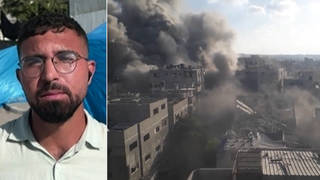
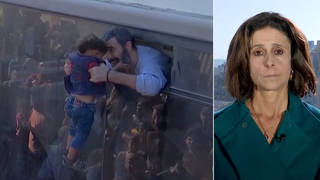
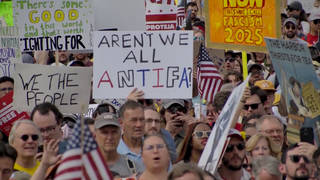
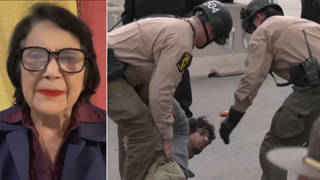





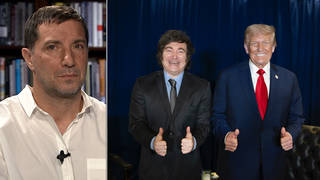
Media Options